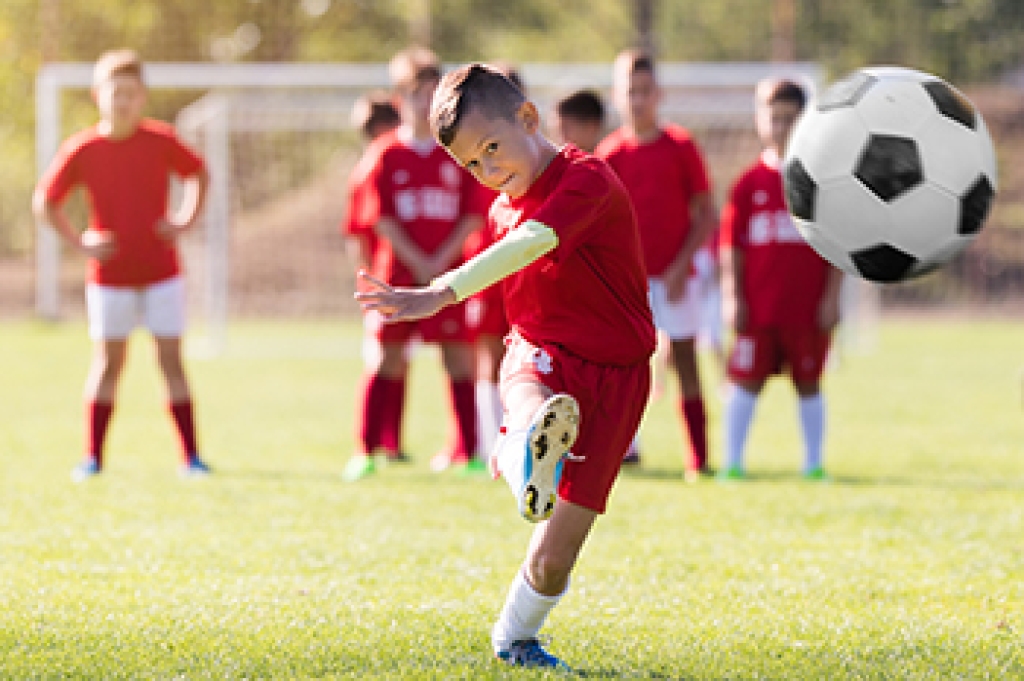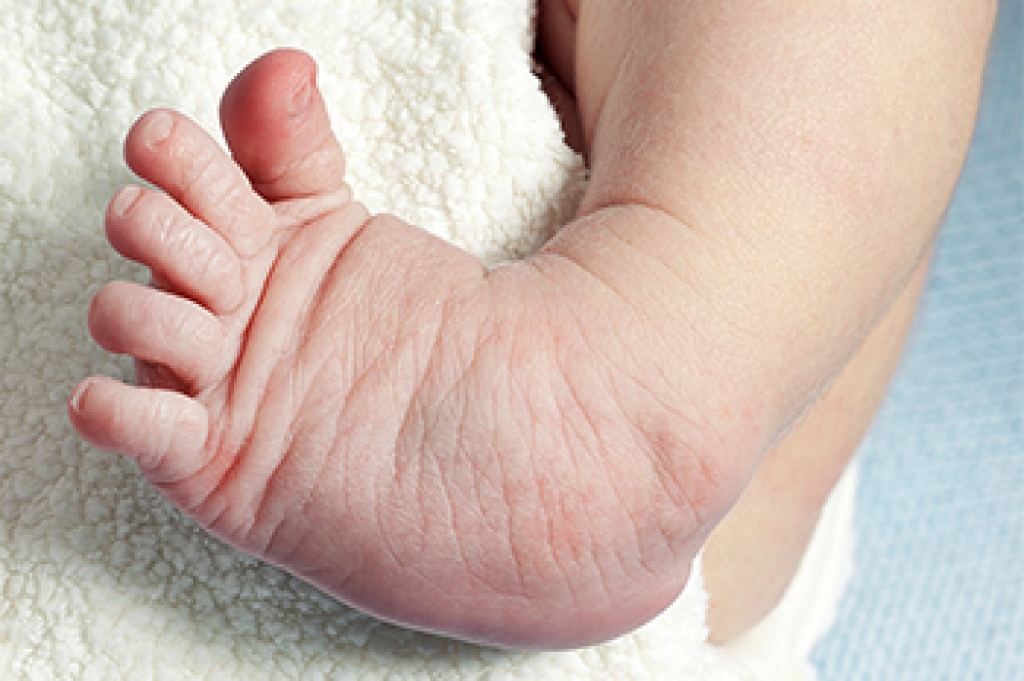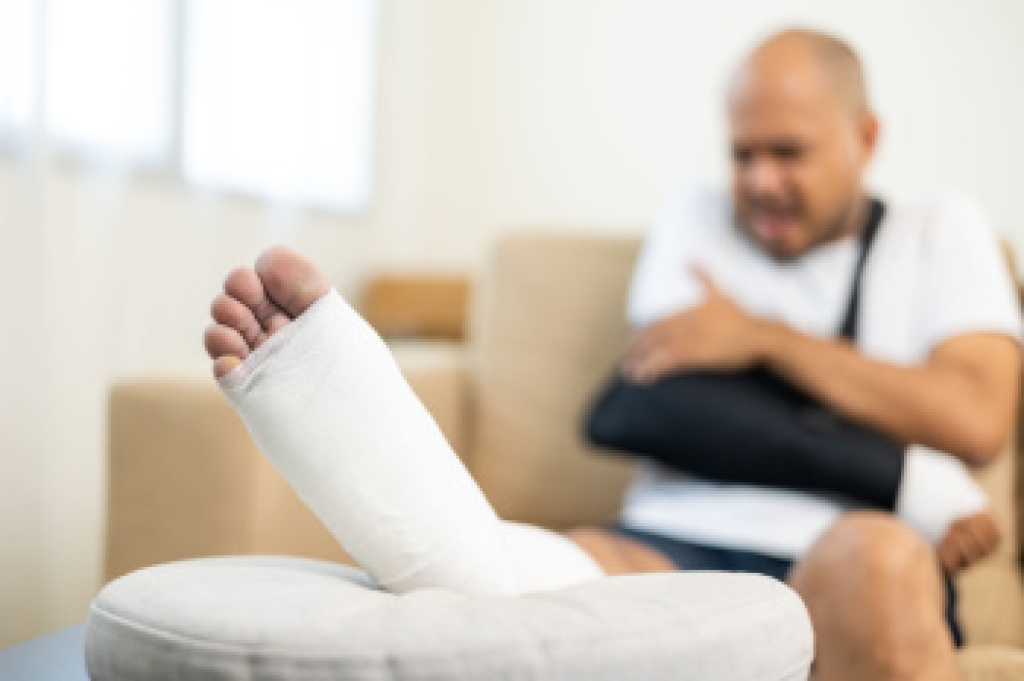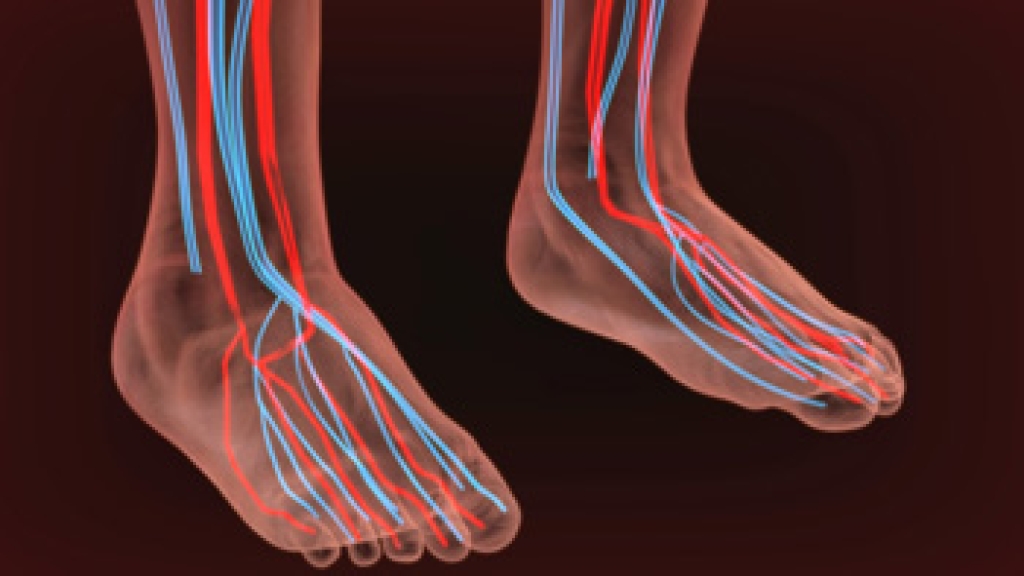Blog
Linking Heel Pain and Youth Soccer

Heel pain is one of the most frequent complaints in young soccer players, often linked to the growth plate in the heel bone. This area, called the calcaneal apophysis, is soft and more vulnerable to stress during growth. When leg bones lengthen faster than the heel bone, extra tension develops, sometimes leading to inflammation known as calcaneal apophysitis, or Sever’s disease. Symptoms usually include throbbing or aching pain at the back of the heel, which may worsen with running, jumping, or wearing certain cleated shoes. Turf cleats generally provide better cushioning and reduce strain compared to grass cleats, which can put extra stress on the heel. A podiatrist can evaluate the cause of heel pain, recommend proper footwear, and provide treatment options that allow young athletes to remain active safely. If your child exhibits signs of heel pain after sports activities, it is suggested that you schedule an appointment with a podiatrist for an exam and appropriate treatment.
Sever's disease often occurs in children and teens. If your child is experiencing foot or ankle pain, see Vrunda Dalal, DPM from Sole Focus Foot and Ankle. our doctor can treat your child’s foot and ankle needs.
Sever’s Disease
Sever’s disease is also known as calcaneal apophysitis, which is a medical condition that causes heel pain I none or both feet. The disease is known to affect children between the ages of 8 and 14.
Sever’s disease occurs when part of the child’s heel known as the growth plate (calcaneal epiphysis) is attached to the Achilles tendon. This area can suffer injury when the muscles and tendons of the growing foot do not keep pace with bone growth. Therefore, the constant pain which one experiences at the back of the heel will make the child unable to put any weight on the heel. The child is then forced to walk on their toes.
Symptoms
Acute pain – Pain associated with Sever’s disease is usually felt in the heel when the child engages in physical activity such as walking, jumping and or running.
Highly active – Children who are very active are among the most susceptible in experiencing Sever’s disease, because of the stress and tension placed on their feet.
If you have any questions, please feel free to contact our office located in Marlton, NJ . We offer the newest diagnostic and treatment technologies for all your foot care needs.
Developmental Foot Problems in Newborns

Some babies are born with foot deformities that affect the way the toes, arches, or ankles are positioned. Clubfoot, for example, causes the foot to twist downward and inward. In more severe cases, surgery may be needed if casting does not correct the shape. Metatarsus adductus results in the front of the foot turning inward, while metatarsus varus causes the sole to angle inward with a high arch. A congenital foot condition known as talipes calcaneovalgus occurs when the foot bends upward with the heel turned outward. Flat feet, medically known as pes planus, occur when the arch does not develop as expected. Each of these conditions may interfere with normal foot function, if not addressed early. A podiatrist can diagnose these problems, guide appropriate treatment, and support healthy development. If your newborn exhibits signs of developmental foot problems, it is suggested that you schedule an appointment with a podiatrist for an exam and appropriate treatment.
Congenital foot problems require immediate attention to avoid future complications. If you have any concerns, contact Vrunda Dalal, DPM of Sole Focus Foot and Ankle. our doctor can provide the care you need to keep you pain-free and on your feet.
Congenital foot problems are deformities affecting the feet, toes, and/or ankles that children are born with. Some of these conditions have a genetic cause while others just happen. Some specific foot ailments that children may be born with include clubfeet, polydactyly/macrodactyly, and cleft foot. There are several other foot anomalies that can occur congenitally. What all of these conditions have in common is that a child may experience difficulty walking or performing everyday activities, as well as trouble finding footwear that fits their foot deformity. Some of these conditions are more serious than others. Consulting with a podiatrist as early as possible will help in properly diagnosing a child’s foot condition while getting the necessary treatment underway.
What are Causes of Congenital Foot Problem?
A congenital foot problem is one that happens to a child at birth. These conditions can be caused by a genetic predisposition, developmental or positional abnormalities during gestation, or with no known cause.
What are Symptoms of Congenital Foot Problems?
Symptoms vary by the congenital condition. Symptoms may consist of the following:
- Clubfoot, where tendons are shortened, bones are shaped differently, and the Achilles tendon is tight, causing the foot to point in and down. It is also possible for the soles of the feet to face each other.
- Polydactyly, which usually consists of a nubbin or small lump of tissue without a bone, a toe that is partially formed but has no joints, or an extra toe.
- Vertical talus, where the talus bone forms in the wrong position causing other bones in the foot to line up improperly, the front of the foot to point up, and the bottom of the foot to stiffen, with no arch, and to curve out.
- Tarsal coalition, when there is an abnormal connection of two or more bones in the foot leading to severe, rigid flatfoot.
- Cleft foot, where there are missing toes, a V-shaped cleft, and other anatomical differences.
- Macrodactyly, when the toes are abnormally large due to overgrowth of the underlying bone or soft tissue.
Treatment and Prevention
While there is nothing one can do to prevent congenital foot problems, raising awareness and receiving neonatal screenings are important. Early detection by taking your child to a podiatrist leads to the best outcome possible.
If you have any questions, please feel free to contact our office located in Marlton, NJ . We offer the newest diagnostic and treatment technologies for all your foot care needs.
Looking After a Broken Foot

A fracture in the foot can result from a sudden injury, an awkward step, or repeated stress on the bones. Signs may include sharp pain, swelling, bruising, or trouble standing and walking. Because the foot has many small bones that work together for balance and movement, getting the right care is essential. Treatment varies depending on how serious the break is. Some patients may need only rest, a walking boot, or crutches, while others may require a cast, or, in more complicated cases, surgery to realign the bones. Elevating the foot and keeping weight off it helps with recovery. Healing usually takes several weeks, but following a podiatrist’s guidance supports a smoother return to activity. If you think you may have fractured your foot, it is recommended that you promptly visit a podiatrist for an accurate diagnosis and care plan.
A broken foot requires immediate medical attention and treatment. If you need your feet checked, contact Vrunda Dalal, DPM from Sole Focus Foot and Ankle. our doctor can provide the care you need to keep you pain-free and on your feet.
Broken Foot Causes, Symptoms, and Treatment
A broken foot is caused by one of the bones in the foot typically breaking when bended, crushed, or stretched beyond its natural capabilities. Usually the location of the fracture indicates how the break occurred, whether it was through an object, fall, or any other type of injury.
Common Symptoms of Broken Feet:
- Bruising
- Pain
- Redness
- Swelling
- Blue in color
- Numbness
- Cold
- Misshapen
- Cuts
- Deformities
Those that suspect they have a broken foot shoot seek urgent medical attention where a medical professional could diagnose the severity.
Treatment for broken bones varies depending on the cause, severity and location. Some will require the use of splints, casts or crutches while others could even involve surgery to repair the broken bones. Personal care includes the use of ice and keeping the foot stabilized and elevated.
If you have any questions, please feel free to contact our office located in Marlton, NJ . We offer the newest diagnostic and treatment technologies for all your foot care needs.
Managing Raynaud's Syndrome
 Raynaud’s syndrome is a condition which causes smaller arteries that supply blood to areas such as the skin of the toes to constrict in response to cold weather or stress. The constriction results in a temporary loss of blood flow to the affected areas, which may become cold, numb, or discolored. If you have Raynaud’s syndrome, it can be managed. Since cold temperatures are a known trigger of Raynaud’s, it is recommended that you protect your feet from the cold by wearing warm socks and shoes. Avoid wearing socks and shoes that are too tight, as these can further restrict your circulation. Regular exercise may improve circulation as well. For more information about managing Raynaud’s syndrome when it affects your feet, please consult with a podiatrist.
Raynaud’s syndrome is a condition which causes smaller arteries that supply blood to areas such as the skin of the toes to constrict in response to cold weather or stress. The constriction results in a temporary loss of blood flow to the affected areas, which may become cold, numb, or discolored. If you have Raynaud’s syndrome, it can be managed. Since cold temperatures are a known trigger of Raynaud’s, it is recommended that you protect your feet from the cold by wearing warm socks and shoes. Avoid wearing socks and shoes that are too tight, as these can further restrict your circulation. Regular exercise may improve circulation as well. For more information about managing Raynaud’s syndrome when it affects your feet, please consult with a podiatrist.
Poor circulation is a serious condition and needs immediate medical attention. If you have any concerns with poor circulation in your feet contact Vrunda Dalal, DPM of Sole Focus Foot and Ankle. our doctor will treat your foot and ankle needs.
Poor Circulation in the Feet
Poor blood circulation in the feet and legs is can be caused by peripheral artery disease (PAD), which is the result of a buildup of plaque in the arteries.
Plaque buildup or atherosclerosis results from excess calcium and cholesterol in the bloodstream. This can restrict the amount of blood which can flow through the arteries. Poor blood circulation in the feet and legs are sometimes caused by inflammation in the blood vessels, known as vasculitis.
Causes
Lack of oxygen and oxygen from poor blood circulation restricts muscle growth and development. It can also cause:
- Muscle pain, stiffness, or weakness
- Numbness or cramping in the legs
- Skin discoloration
- Slower nail & hair growth
- Erectile dysfunction
Those who have diabetes or smoke are at greatest risk for poor circulation, as are those who are over 50. If you have poor circulation in the feet and legs it may be caused by PAD and is important to make changes to your lifestyle in order to reduce risk of getting a heart attack or stroke. Exercise and maintaining a healthy lifestyle will dramatically improve conditions.
As always, see a podiatrist as he or she will assist in finding a regimen that suits you. A podiatrist can also prescribe you any needed medication.
If you have any questions, please feel free to contact our office located in Marlton, NJ . We offer the newest diagnostic and treatment technologies for all your foot care needs.


